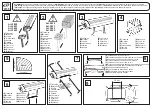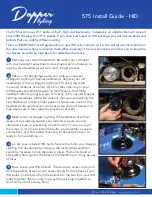
You will feel a pulsation in the brake
pedal when the ABS activates, and
may hear some noise. This is normal:
it is the ABS rapidly pumping the
brakes. On dry pavement, you will
need to press on the brake pedal
very hard before the ABS activates.
However, you may feel the ABS
activate immediately if you are trying
to stop on snow or ice.
The anti-lock brake system (ABS)
helps prevent the wheels from
locking up, and helps you retain
steering control by pumping the
brakes rapidly, much faster than a
person can do it.
The electronic brake distribution
(EBD) system, which is part of the
ABS, also balances the front-to-rear
braking distribution according to
vehicle loading.
Let the ABS work for you by always
keeping firm, steady pressure on the
brake pedal. This is sometimes
referred to as ‘‘stomp and steer.’’
The hydraulic system that operates
the brakes has two separate circuits.
Each circuit works diagonally across
the vehicle (the left-front brake is
connected with the right-rear brake,
etc.). If one circuit should develop a
problem, you will still have braking
at two wheels.
All four brakes have audible brake
wear indicators.
If the brake pads need replacing, you
will hear a distinctive, metallic
screeching sound when you apply
the brake pedal. If you do not have
the brake pads replaced, they will
screech all the time. It is normal for
the brakes to occasionally squeal or
squeak when you apply them.
You should never pump the brake pedal.
Braking System, Anti-lock Brakes (ABS)
Anti-lock Brakes (ABS)
Braking System Design
Brake Wear Indicators
D
riv
ing
429
10/01/26 19:37:31 31SZA620_434
2011 Pilot
Содержание 2011 Pilot
Страница 68: ...64 01 26 18 34 00 31SZA620_069 2011 Pilot ...
Страница 396: ...392 01 26 19 30 35 31SZA620_397 2011 Pilot ...
Страница 538: ...534 01 26 19 55 17 31SZA620_539 2011 Pilot ...
Страница 556: ...552 01 26 19 58 23 31SZA620_557 2011 Pilot ...
















































